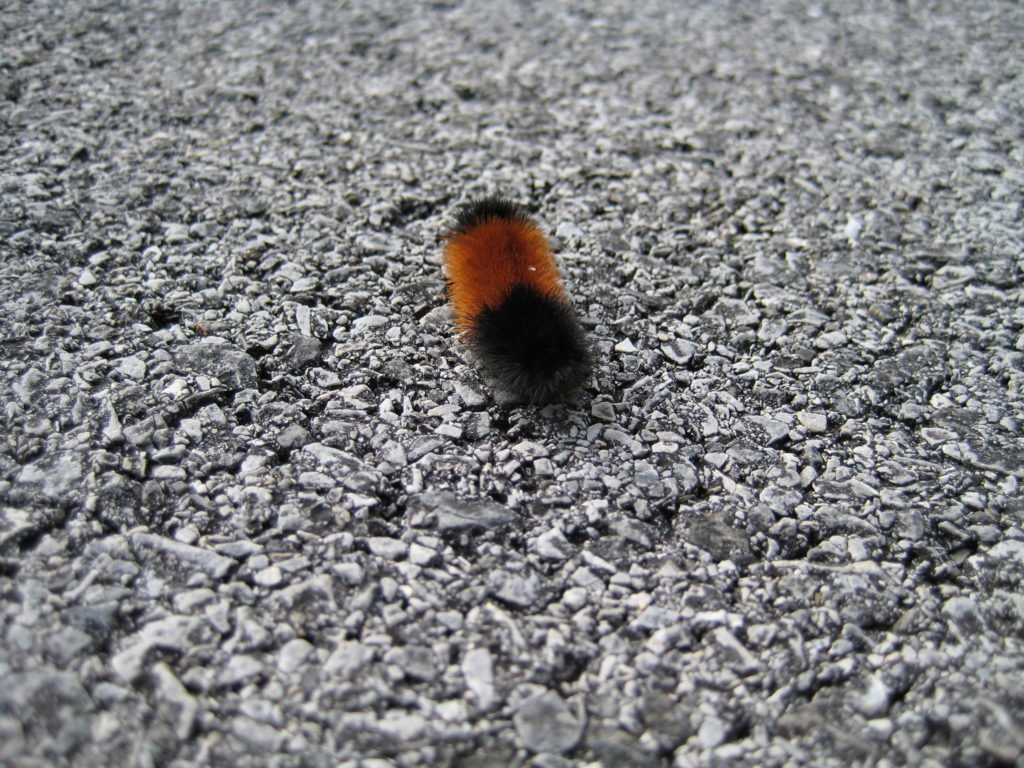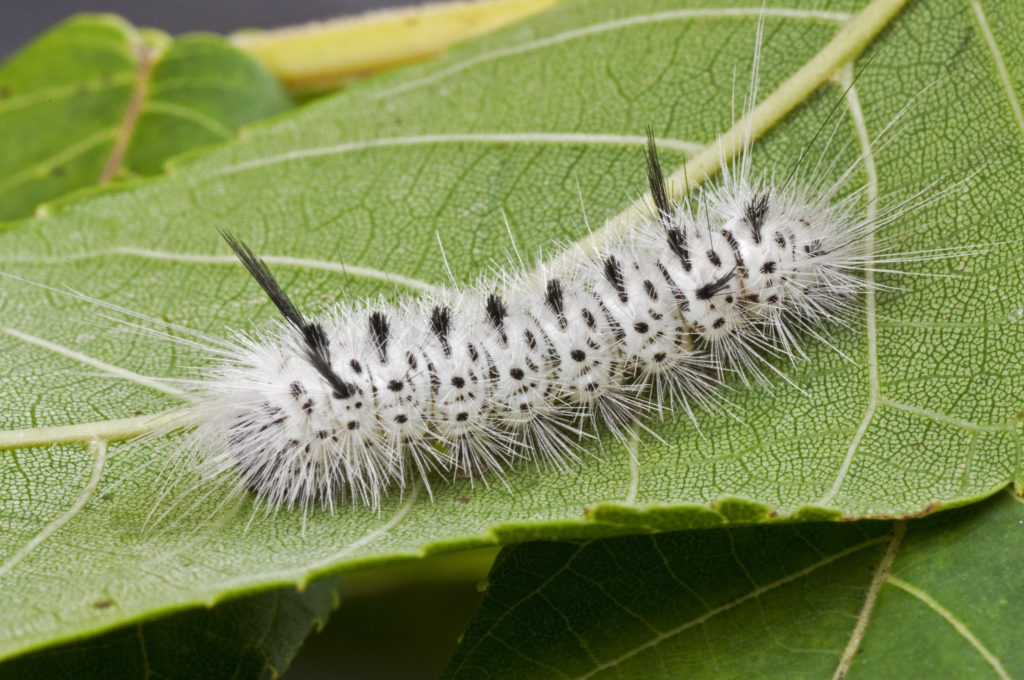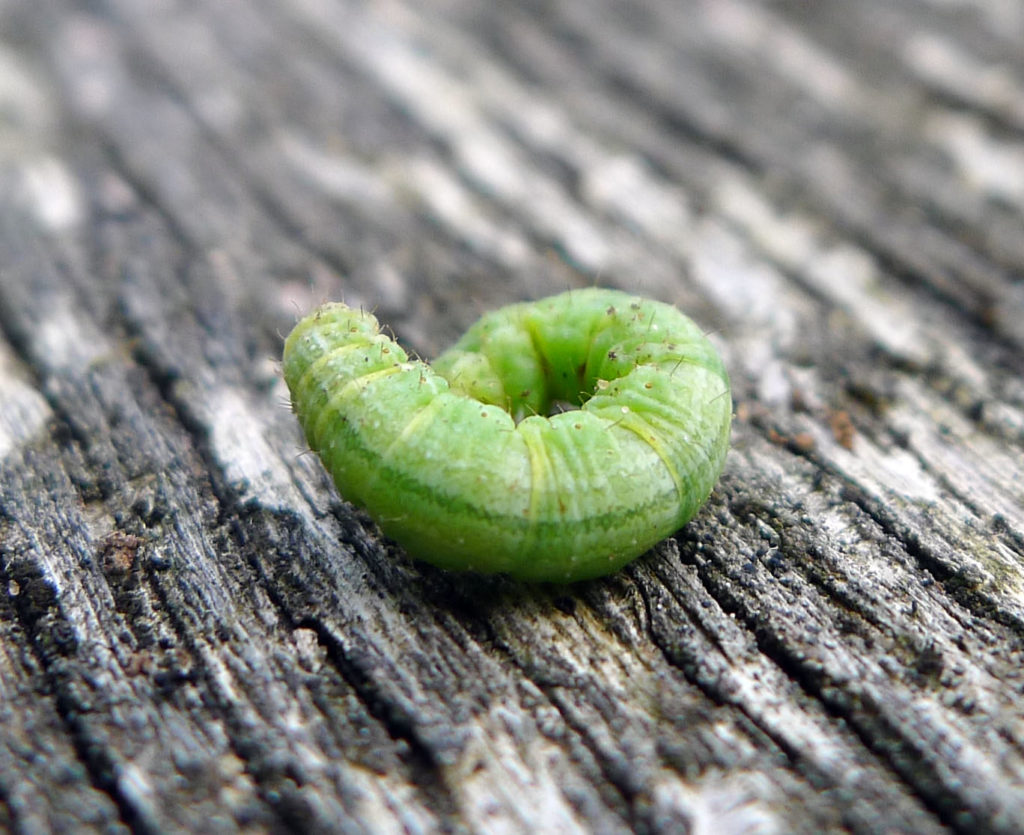For the leaf peepers among us, October brings gorgeous forests full of color. But while the foliage this year has certainly stolen the show, spend a couple minutes looking closer among the falling leaves and you may discover a host of other, colorful specimens making their own preparations for fall.

Perhaps most famous among these harbingers of the coming cold is the Woolly Bear (Pyrrharctia isabella). This caterpillar, identified by its hairy appearance and distinctive black-brown-black segments, spends the fall searching for an appropriate nook or cranny where it can bunker down for the winter. Legend has it that the width of the brown center section (as opposed to the black ends) indicates the severity of the season to come: the narrower the band, the stronger the winter. (In reality, the variation in segments depends more on how much food the caterpillar has eaten – more an indicator of past conditions than a predictor of the future.)

Should you choose to attempt entomological meteorology this fall, be careful to avoid contact with the caterpillar’s hair, which can cause itchiness. The fuzz of the woolly bear is nothing, however, compared to the spikey mane of another category of colorful crawlers, the Tussock Moth caterpillars (at term that refers to many genera of the Erebidae family). Species within the genus range in color from white to yellow, with hairs appearing in distinct, spikey clumps along the back. Complete with microscopic barbs, these hairs provide an effective defense mechanism to predators, or an efficient means of irritation to their human observers.

Both these caterpillars share a common timeline: come spring, they will transform into moths, lay eggs, and start the cycle once again. And while the casual observer should take care to avoid unnecessary contact with these species, it is the much more nefarious Winter Moth (Operophtera brumata) that requires attention this time of year. Inactive in its cocoon for most of the summer, the winter moth hatches in late fall and begins to wander the woods, eventually crawling up the bark of trees where it can lay eggs for the following spring. If allowed to do so, these eggs will hatch into a fleet of small inchworm-like larvae that can easily defoliate an entire tree.
Luckily, there is much that can be done to stop the winter moth’s upward journey! Click here to read about CELT’s upcoming efforts to stop winter moths in their tracks.
— by Philip Mathieu, CELT Education Coordinator
